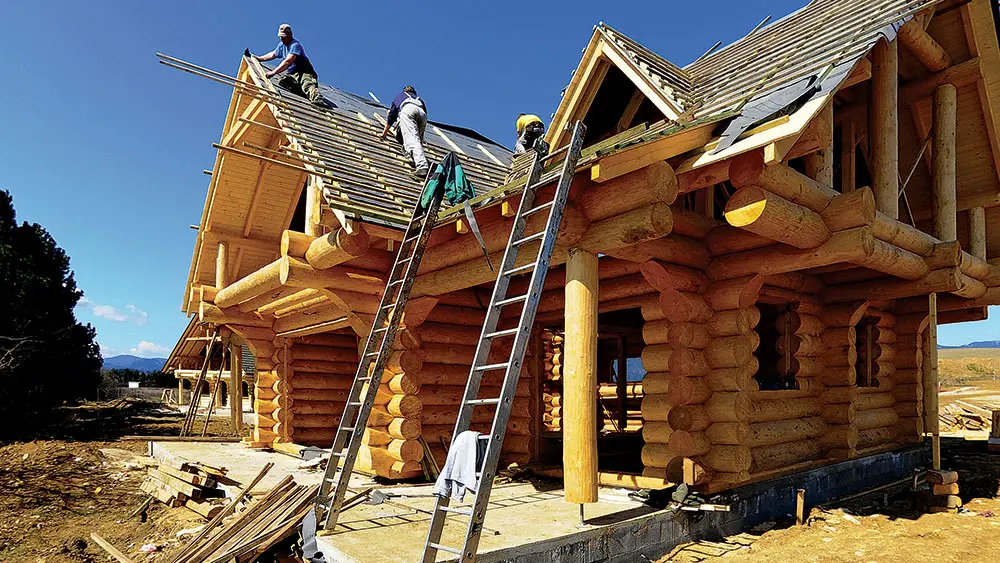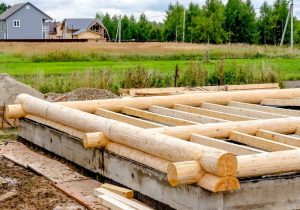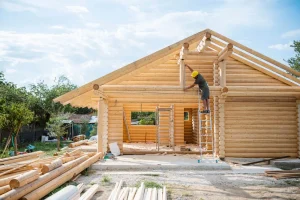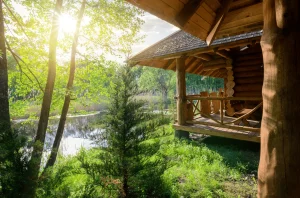Building your first log cabin is an exciting adventure — one that combines craftsmanship, creativity, and a love for nature. Whether you dream of a cozy weekend retreat or a full-time rustic home, constructing a log cabin from the ground up is a deeply rewarding experience. But for first-time builders, the process can seem overwhelming. Where do you start? What materials do you need? And how can you make sure your cabin stands strong for decades?
This comprehensive guide will walk you through every major step — from planning and selecting materials to building and finishing your log cabin — in a simple, practical, and easy-to-follow way. By the end, you’ll have the confidence to start your journey toward creating your dream cabin that blends beauty, function, and sustainability.
1. Start with a Solid Plan: Setting the Foundation for Success
Before you lift a single log, you need a detailed plan. Building a log cabin is not something you can do “as you go.” A clear plan ensures your project stays within budget, meets safety standards, and results in a comfortable, well-designed home.
Start by defining your goals. Are you building a small off-grid cabin or a full-time residence? The size, location, and purpose of your cabin will influence every decision you make — from the layout to the materials.
Next, create or purchase a log cabin floor plan. Many websites and architects offer customizable designs. If you want something unique, consider hiring a professional designer familiar with log structures.
Finally, check your local building codes and zoning regulations. Some areas have restrictions on cabin size, foundation type, or utility systems. Securing the proper permits early prevents costly delays later.
2. Choose the Right Location: Find Your Perfect Spot in Nature
Selecting the ideal location is one of the most important steps in building your log cabin. You’ll want a site that is both beautiful and practical.
Look for a plot with natural drainage to prevent water accumulation near your foundation. The land should also have access to sunlight for warmth and energy efficiency. South-facing slopes are ideal for passive solar heating.
If you’re going off-grid, make sure there’s access to a reliable water source such as a well, stream, or rainwater collection system. Also, consider how you’ll get power — solar panels, generators, or local grid connections.
Lastly, ensure the area offers easy access for construction materials and tools. A remote site can make logistics challenging, so planning ahead is key.
3. Gather the Right Materials: Go Natural, Go Sustainable
The quality of your materials determines the strength and longevity of your cabin. Traditionally, log cabins are made from locally sourced logs — pine, cedar, spruce, or oak being the most common choices.
When choosing your logs, look for ones that are straight, dry, and properly treated to resist insects and rot. Many builders prefer kiln-dried or air-dried logs for better durability and less shrinkage.
Aside from logs, you’ll need materials for the foundation, insulation, roofing, and interior finishing. Eco-conscious builders often opt for reclaimed wood, stone, and natural insulation like wool or cellulose to maintain sustainability.
Remember, investing in high-quality materials upfront pays off in the long run by reducing maintenance costs and ensuring your cabin lasts for generations.
4. Build a Strong Foundation: Stability Starts Here
A solid foundation is essential for any lasting log cabin. The type of foundation you choose depends on the terrain and size of your cabin. Common options include:
- Concrete slab foundation: Ideal for flat terrain and smaller cabins.
- Pier foundation: Great for uneven or rocky land, raising the cabin above ground.
- Full basement: Best for large, permanent cabins, adding extra living or storage space.
Whichever you choose, make sure it’s level, properly reinforced, and moisture-resistant. Waterproofing the base is crucial to prevent rot or structural damage over time.
5. Log Preparation and Stacking: The Heart of the Cabin
Now comes the most iconic part — stacking the logs. Start by carefully measuring and cutting your logs to match the design. If you’re using a pre-cut log kit, each piece will already be numbered and fitted for assembly.
The logs are stacked horizontally, interlocking at the corners using notches such as saddle, dovetail, or butt-and-pass joints. Each layer is secured with wooden pegs or metal fasteners for stability.
Between each log, apply caulking or chinking to seal gaps and improve insulation. This step keeps your cabin airtight and energy-efficient.
As you build, frequently check for alignment and balance. Precision is key — uneven logs can compromise the structure’s integrity over time.
6. Install the Roof: Protecting Your Cabin from the Elements
Once the walls are up, it’s time to install the roof. A strong, weather-resistant roof ensures your cabin can withstand rain, snow, and wind.
Popular choices include metal roofing, cedar shingles, or asphalt tiles. Metal roofs are especially popular for log cabins due to their durability, energy efficiency, and rustic look.
Make sure to install proper roof overhangs to protect the walls from water damage. Adding gutters and downspouts helps divert rainwater away from the foundation — a small detail that makes a big difference in longevity.
7. Add Windows, Doors, and Utilities: Making It Livable
With the structure in place, your log cabin is ready for the finishing touches. Install energy-efficient windows and doors to keep your cabin warm in winter and cool in summer.
Next, set up essential utilities:
- Electricity: Whether from solar panels, a generator, or the local grid.
- Plumbing: Use eco-friendly systems like composting toilets or greywater recycling.
- Heating: Consider wood stoves, pellet heaters, or radiant floor systems.
This is also the stage to insulate your roof and floor for added comfort. Proper insulation reduces energy use and keeps your cabin cozy year-round.
8. Interior Design: Create a Cozy, Natural Space
The final step — and arguably the most enjoyable — is designing your interior. A log cabin’s charm lies in its simplicity, so embrace natural materials and warm tones.
Furnish your space with wooden furniture, soft textiles, and warm lighting. Add rugs, throws, and cushions for comfort. Use earthy colors like browns, greens, and creams to maintain a connection to nature.
Don’t forget storage — small cabins benefit from multi-functional furniture like built-in benches or loft beds.
Finally, personalize your space with handmade décor, vintage items, or natural accents like plants and stonework to make your log cabin truly feel like home.
Frequently Asked Questions (FAQs)
1. How much does it cost to build a small log cabin?
The cost can range from $40,000 to $120,000 depending on size, materials, and location. Using reclaimed materials or DIY kits can lower expenses significantly.
2. Can I build a log cabin by myself?
Yes, but it requires time, patience, and some construction skills. Many beginners use log cabin kits that come with pre-cut materials and assembly guides.
3. What is the best wood for log cabins?
Cedar, pine, and spruce are popular choices because they’re durable, weather-resistant, and easy to work with.
4. How long does it take to build a log cabin?
On average, it takes 3 to 9 months depending on size, complexity, and whether you’re working alone or with a contractor.
5. How can I maintain my log cabin after building?
Regularly inspect and reapply sealant, clean the exterior annually, and check for pests or water damage. Proper maintenance keeps your cabin strong and beautiful for years.
Conclusion: Turning Dreams into Timber Reality
Building your first log cabin is a journey filled with creativity, hard work, and fulfillment. Each log you stack and nail you drive brings you closer to a home that reflects your vision and values. From selecting the right site to designing a cozy interior, every step is a rewarding part of creating something truly timeless.
A log cabin isn’t just a building — it’s a connection to nature, a symbol of self-reliance, and a place where memories are made. With the right plan, materials, and dedication, your first log cabin can become the perfect retreat — sustainable, durable, and uniquely yours.




